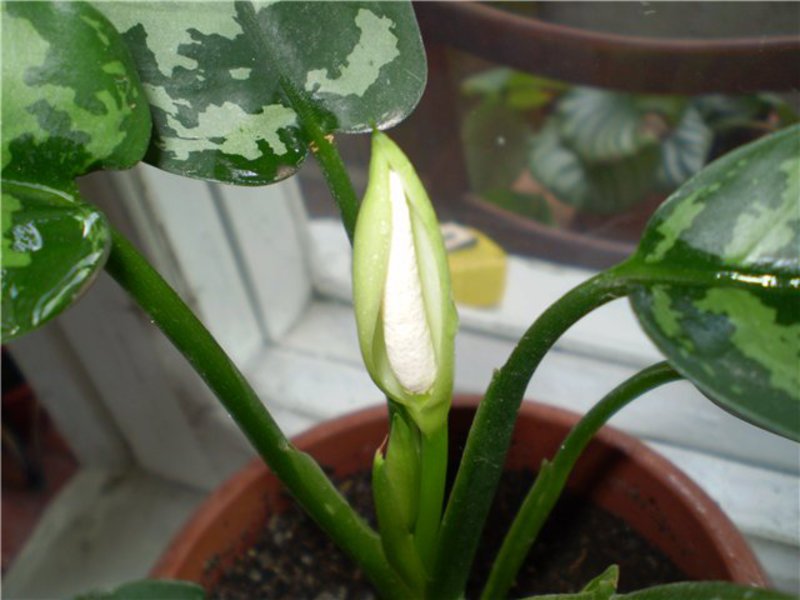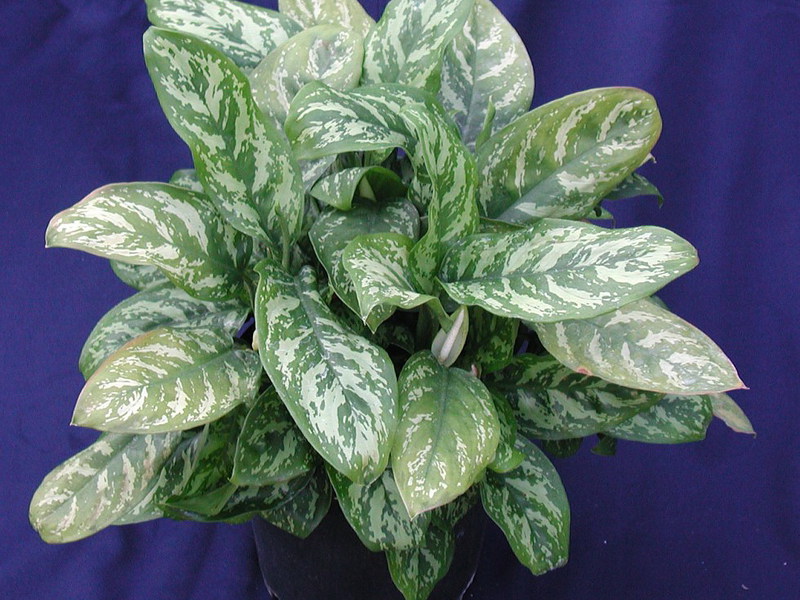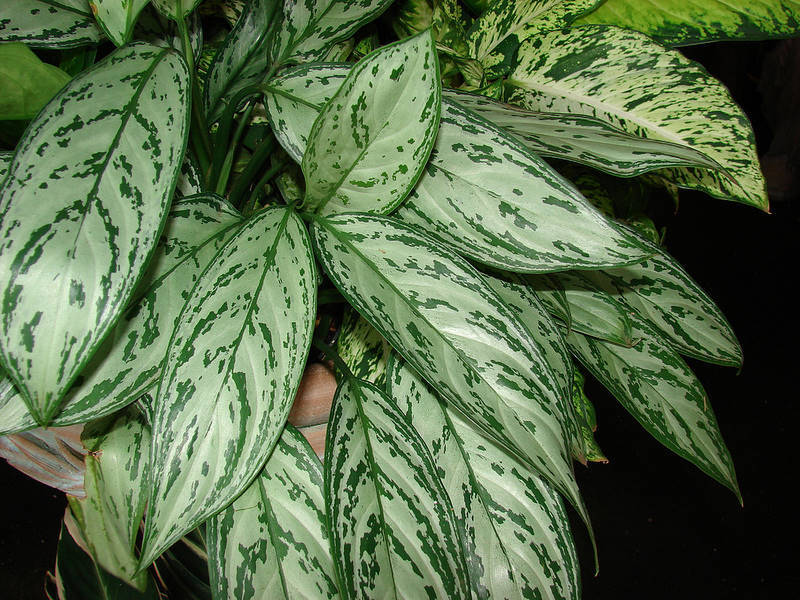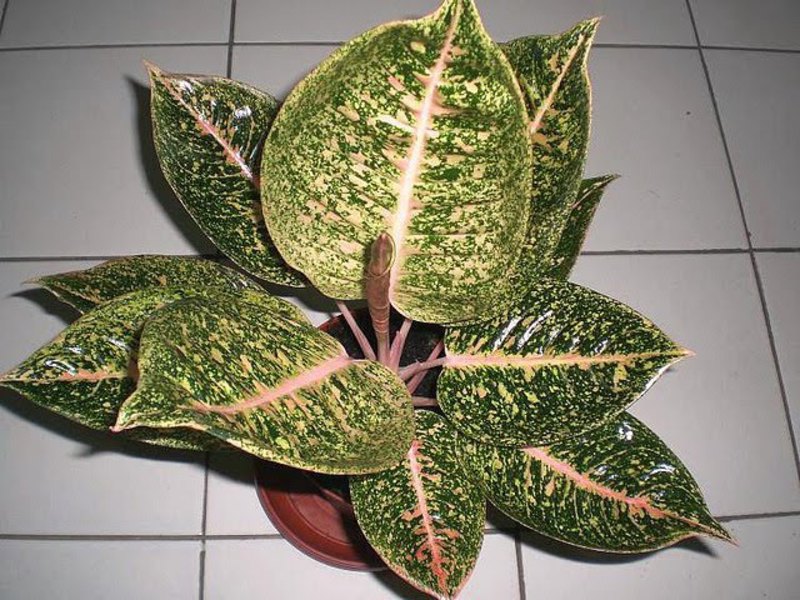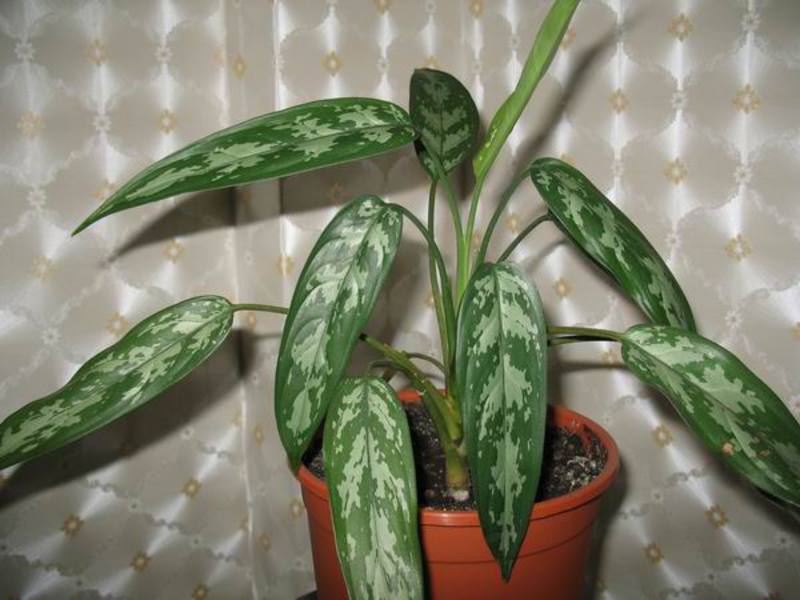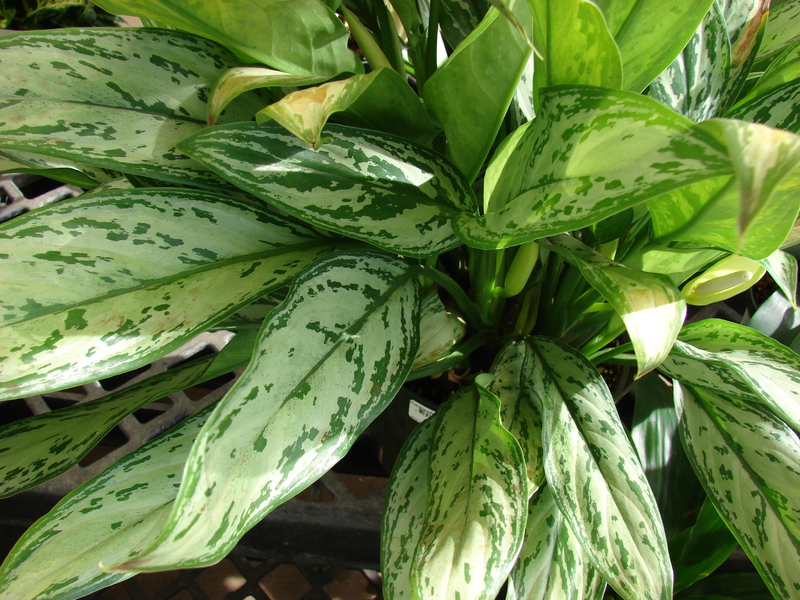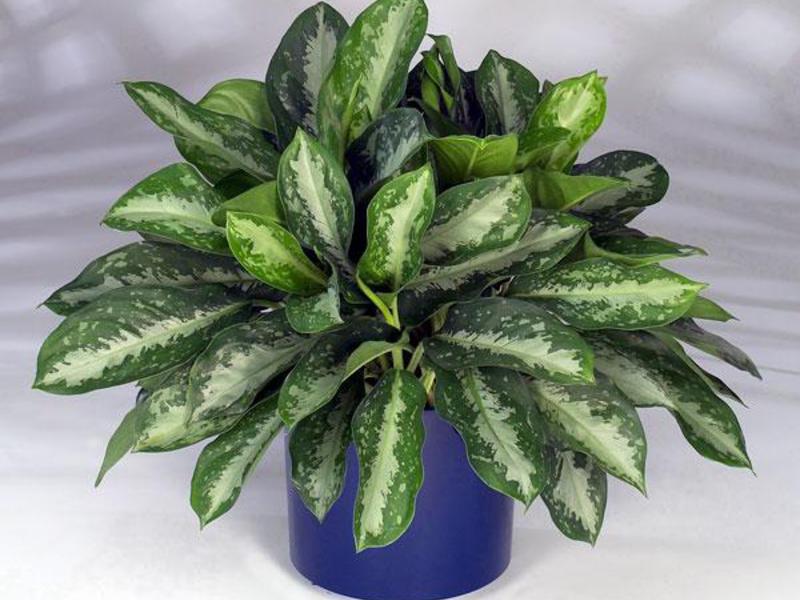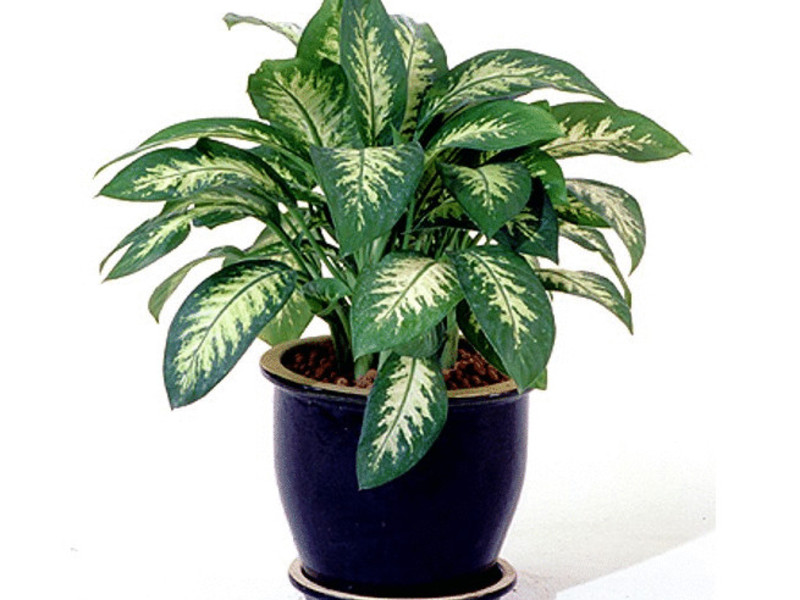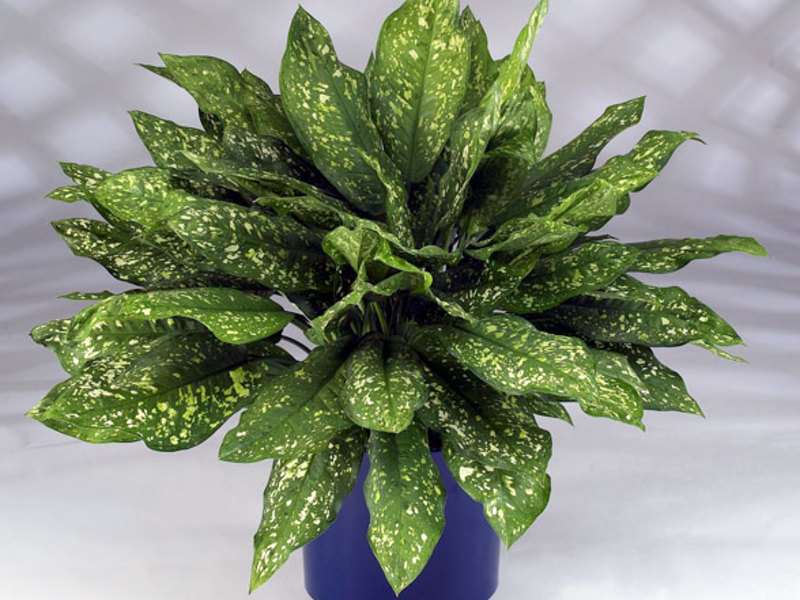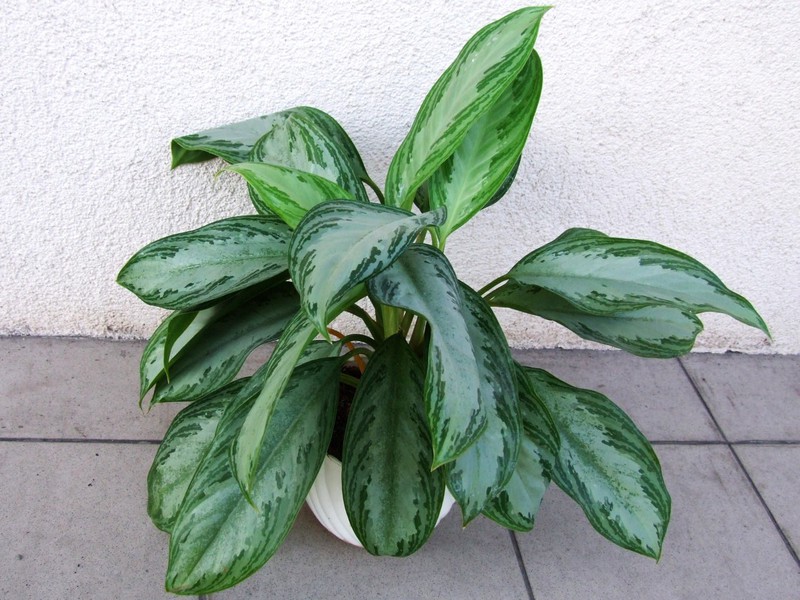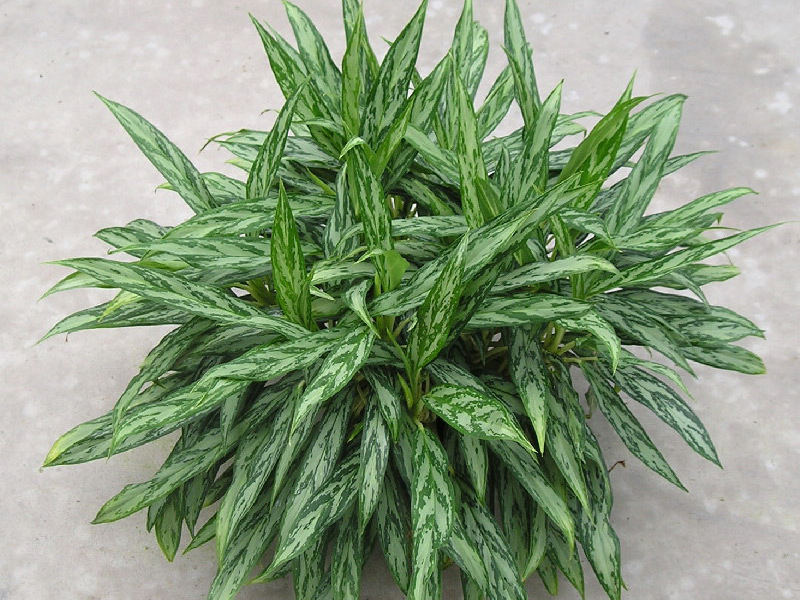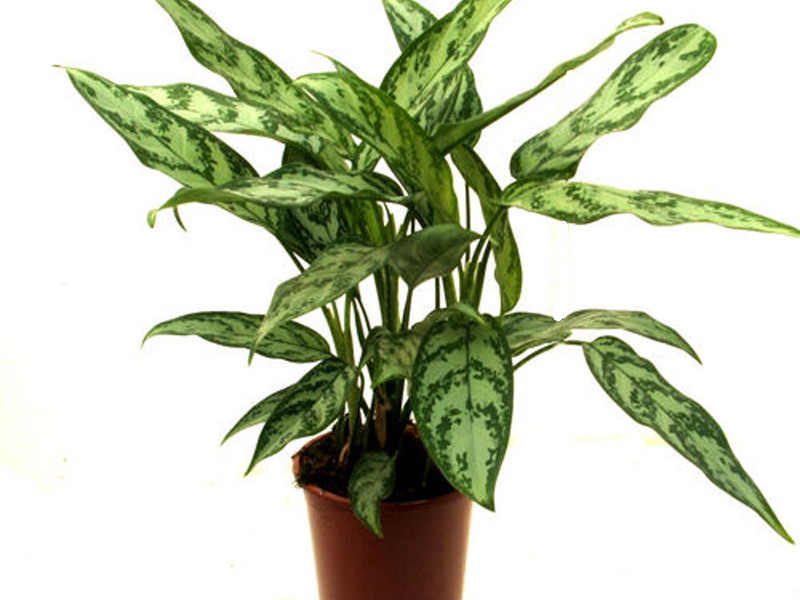Aglaonema belongs to shade-loving decorative deciduous plants. India is considered her homeland, but at home the flower grows successfully in our country. With the help of different types of aglaonem, you can decorate the shaded corners of the apartment and enjoy the fresh green leaves of different colors. The variety of varieties of this unpretentious plant allows you to do this.
Content
Types and varieties of aglaonema with a photo
Outwardly, aglaonema looks like a small bush, the height of which can reach up to 50-80 cm... On its erect or horizontal trunk, cordate or elongated leathery leaves sit tightly. They can be of a wide variety of shades of green.
Under favorable conditions, mature plants can bloom. The aglaonema flower is an inflorescence-ear that is usually wrapped in a white or greenish veil.
All aglaonems by the height of the bush are divided into three groups, each of which is distinguished by a variety of varieties.
Low-growing aglaonema
Plants grow up to only 25 cm, and are distinguished by drooping or creeping stems. Among this type of plants, one can distinguish the three most famous varieties:
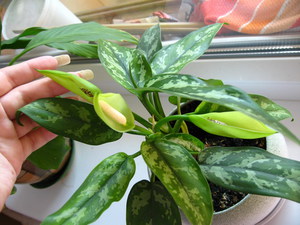 Aglaonema short-covering differs in strongly elongated oval green leaves. A white vein runs along the center of each leaf. The plant grows slowly and forms few leaves. Therefore, in order to get a beautiful decorative bush, several seedlings are planted in one container.
Aglaonema short-covering differs in strongly elongated oval green leaves. A white vein runs along the center of each leaf. The plant grows slowly and forms few leaves. Therefore, in order to get a beautiful decorative bush, several seedlings are planted in one container.- Aglaonema ribbed is a very small bush with a branching trunk of an underground or creeping shape. Heart-shaped leaves can be white or green in color with various specks and stripes. A plant of this species, just before the New Year, forms an inflorescence that grows up to ten centimeters and blooms for only a few days.
- Aglaonema rounded is distinguished by heart-shaped leaves of an unusual black-red color. Bright pink stripes are drawn along the entire length of the sheet.
Medium-sized varieties
On the straight trunks of low bushes of medium-sized aglaonemas, there are long leaves that grow up to 30 cm in length. Popular varieties:
- Aglaonema Maria is a bush with dense foliage of rich green color. The plant is very shade-tolerant and can even grow indoors with artificial lighting.
- The Treiba variety is distinguished by small leaves that grow up to only 15 cm. They have a greenish color and a silvery pattern.
- Aglaonema is modest in height, reaching 50 cm. Its rounded leaves have convex veins and sharp tips. They grow in length up to 20 cm.
- The Silver Queen variety grows up to 40 cm and requires good lighting, since the surface of its leaves is silvery-blue.
High aglaonema
The varieties of this group are obtained on the basis of shade-tolerant species of Aglaonem, therefore they are very popular. They look great both as single plants and in large-sized compositions. The most famous of them:
 Pattaya Beauty is a very elegant plant with slender, slender stems. On the surface of large leaves, green edges and a light gray center are clearly expressed. With age, the color of the leaves becomes more and more dark. Pattaya Beauty can grow in rooms with poor lighting, temperature fluctuations and low air humidity. The lower leaves fall off over time, and the plant becomes like a palm tree.
Pattaya Beauty is a very elegant plant with slender, slender stems. On the surface of large leaves, green edges and a light gray center are clearly expressed. With age, the color of the leaves becomes more and more dark. Pattaya Beauty can grow in rooms with poor lighting, temperature fluctuations and low air humidity. The lower leaves fall off over time, and the plant becomes like a palm tree.- Aglaonema Friedman can grow up to one and a half meters. Its wide, large leaves have wavy edges. There are silvery spots in the middle of the leaves, and dark green specks along the edges.
- The Silver Bay variety is an impressive plant, the trunk of which will grow more than one meter. The plant branches from the roots, so the trunk is bare very slowly, and the bush remains lush for a long time. The long leaves of the plant, pointed upwards, grow up to 30 cm. Gray spots are located along their entire surface. A young plant has leaves of a light green hue, which become darker with age. The Silver Bay variety differs in that it is cold-resistant.
Aglaonema: home care, photo
The plant prefers diffused lighting and slightly shaded areas. Therefore, when deciding on the choice of a place for an aglaonema, you should not install a pot with a plant on the southern windowsills in direct sunlight.
In general, caring for a decorative bush at home is quite simple, but still has its own nuances.
Temperature and humidity
In the summer, the air temperature for aglaonema should be within 20-25 degreesand it is better to keep the plant in cooler conditions in winter.
Aglaonema loves humid air, therefore it requires regular spraying. To prevent the leaves from drying out, the bush should be kept away from heating appliances. From time to time, the plant can have a shower. Under these conditions, the leaves will always be shiny and bright.
Transfer
A flower brought from the store in a transport pots requires transplanting into a pot suitable for it and an earthen mixture. It is best to do the transshipment, which should be done after the plant has adapted to new conditions.
Aglaonema soil should be loose and contain the following components:
- sod land;
- leafy ground;
- peat;
- sand.
A large amount of drainage is also required. A new pot is chosen two to three centimeters in diameter and height larger than the previous one.
In the future, when caring for aglaonema, it will be necessary to transplant young plants into a more spacious container every spring. Adult bushes are transplanted every two to three years.
Watering
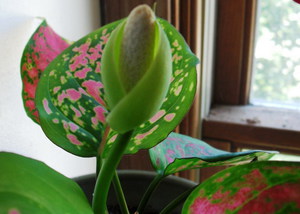 Aglaonema loves moist soil without stagnant water. The abundance and frequency of watering depends on the conditions of its maintenance. In cool rooms, the plant is rarely watered. Before watering, be sure to check the topsoil... If it is dry, then the plant can be watered.
Aglaonema loves moist soil without stagnant water. The abundance and frequency of watering depends on the conditions of its maintenance. In cool rooms, the plant is rarely watered. Before watering, be sure to check the topsoil... If it is dry, then the plant can be watered.
Water for irrigation must be settled and at room temperature. Ideally, it should be boiled.
By the leaves of the flower, you can find out about the quality of watering. Spots or yellow leaves indicate that the water is likely to contain a lot of chlorine. If the leaves are shriveled and dry, then the amount of moisture must be increased.
Top dressing
Aglaonema care involves feeding the plant regularly. Twice a month should be held fertilizing with mineral fertilizers, which must necessarily include trace elements, potassium, phosphorus and nitrogen.
Foliar dressing will have a good effect on the development and decorativeness of the leaves. It is recommended to spray the leaves with light nutrient solutions one day after watering. If the sun falls on the plant, then it is better to do this in the evening or in cloudy weather. This will keep the leaves from burning.
In order for the aglaonema to bush better, when caring for it, you need to prevent it from blooming, cutting off the grown flowers. Such actions will help provoke the appearance of new buds, the bush will begin to grow and become beautiful and lush.
Reproduction of aglaonema
Home plant can be propagated in three ways:
- dividing the bush;
- cuttings;
- sowing seeds.
Dividing the bush
 This is the easiest way to propagate aglaonema, which requires only careful handling of the plant. In the process of growing aglaonema, you can see that the bush grows, and young shoots are formed on it. They can be separated and dropped into separate containers. Seedlings with healthy leaves and a well-developed root system should be chosen. Young plants planted in pots are covered for the first time plastic bag or jar... Caring for them consists in regular spraying and watering.
This is the easiest way to propagate aglaonema, which requires only careful handling of the plant. In the process of growing aglaonema, you can see that the bush grows, and young shoots are formed on it. They can be separated and dropped into separate containers. Seedlings with healthy leaves and a well-developed root system should be chosen. Young plants planted in pots are covered for the first time plastic bag or jar... Caring for them consists in regular spraying and watering.
Propagation by cuttings
For propagation of aglaonema, lateral and apical shoots, trunk segments are used. In order for the cuttings to take root quickly, a section of the trunk must have several leaves. Places of cuts are sprinkled with finely crushed coal and dried.
Cuttings are planted in a prepared light earthy mixture and watered. For better rooting, they can create greenhouse conditions by covering the container with the planted cuttings with polyethylene. Further care consists in keeping the soil moist and airing the seedlings.
Seed reproduction
Using this method, in a fairly short time, you can get a large amount of planting material... However, seedlings will grow much more slowly than when aglaonema propagates by shoots.
The seeds can be purchased or harvested from the berries of a home plant. It is necessary to make sure that the berries are well separated from the cob and have a deep red color. Seeds must be immediately removed from the berries, washed and dried. The germination rate of such seeds is good, but decreases during storage. Therefore, it is recommended to sow prepared seeds immediately.
Possible growing problems
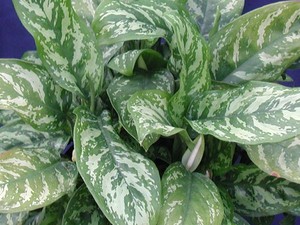 The appearance of the plant and its health can be affected by unsuitable conditions for aglaonema and improper care.
The appearance of the plant and its health can be affected by unsuitable conditions for aglaonema and improper care.
Brown spots on the leaves and poor plant growth indicate a low water temperature for irrigation or its hardness. In this case, the water must be defended, and to eliminate hard impurities, add citric or oxalic acid.
Dry leaf edges and deformation indicate too dry indoor air. The plant should be sprayed as often as possible and occasionally rinsed in the shower.
If the leaves begin to turn yellow, then the reason may be over-watering the plant or keeping it at too low temperatures. Therefore, the flower must be rearranged to a warmer room or watering must be limited.
Of the pests for aglaonema are dangerous thrips, whiteflies, aphids, mealy worms and spider mites. The leaves of the plant need to be inspected regularly, especially if they begin to dry out, deform or fall off. If pests are found, the bush must be treated with special chemicals.
Aglaonema is very unpretentious, so it is quite easy to grow it at home. When you create comfortable conditions for the plant, you will get a fluffy bush with large and beautiful leaves.
